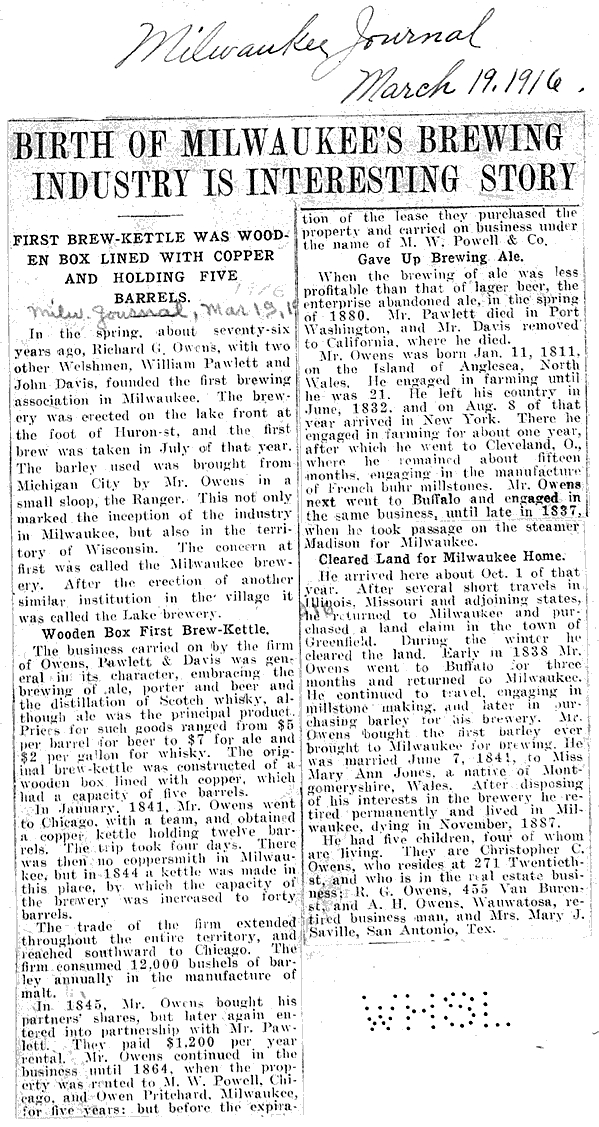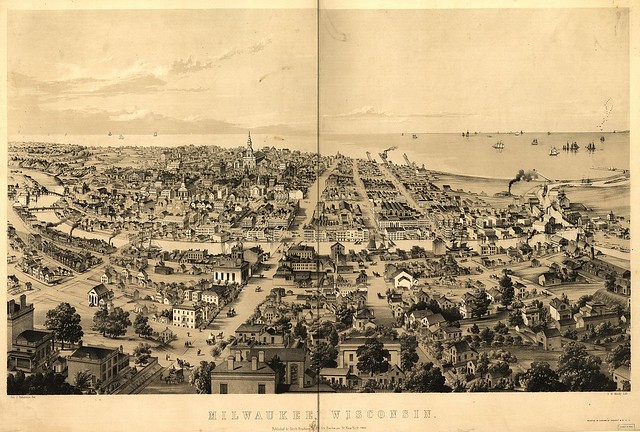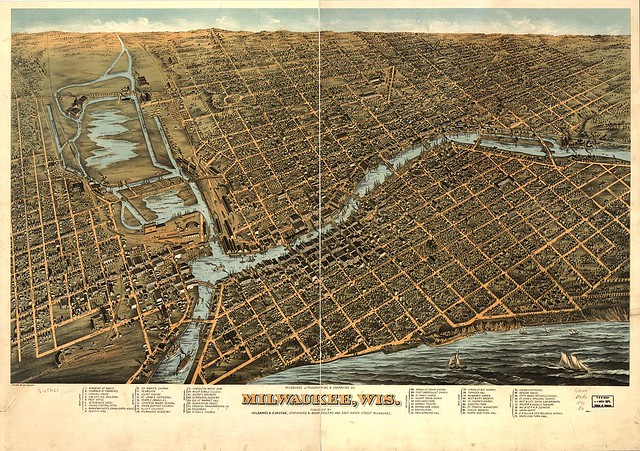
Today is the birthday Richard G. Owens (January 8, 1811-November 10, 1882). He was born in Llanfair-is-Gaer, Caernarvonshire, Wales. When he was 21, in 1832, he moved to the U.S., and moved around doing various jobs for several years, settling in Milwaukee, Wisconsin in 1837. In 1840, along with two Welsh partners (William Pawlett and John Davis), Owens founded what has the distinction of being the first brewery in Milwaukee. It was initially referred to as the Milwaukee Brewery, but the name was changed shortly thereafter to the Lake Brewery once a second brewery in Milwaukee opened to avoid confusion. Some accounts claim that it was also usually known simply as “Owens’ Brewery” since he quickly bought out his partners. In 1864, he leased, and then sold, the brewery to Chicagoan M.W. Powell who ran it until 1880, when it closed for good.
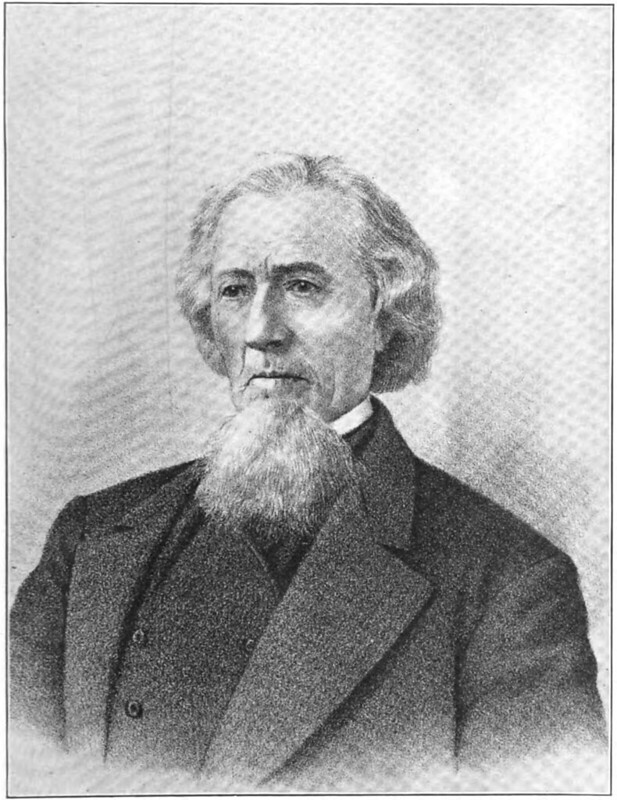
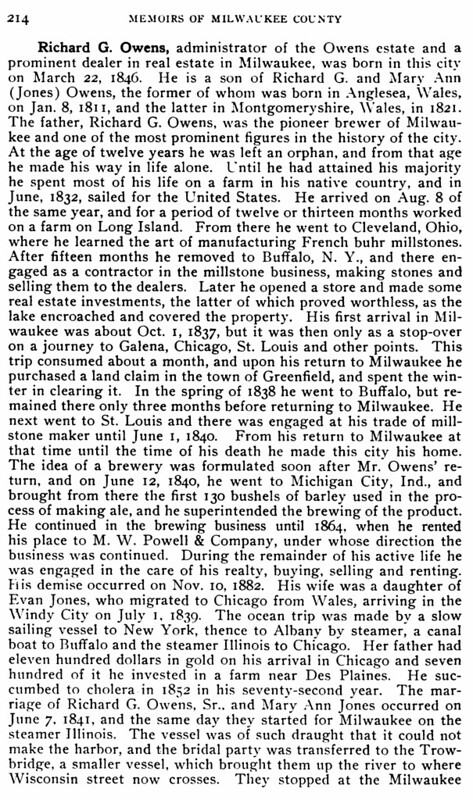
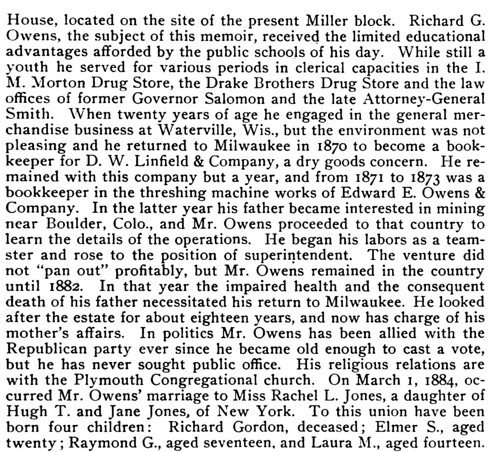
This section of “Pioneer Brewing in Milwaukee” from the Brewing entry in the Encyclopedia of Milwaukee includes a mention of Owens:
Milwaukee’s brewing industry formed in the early 1840s, and developed rapidly along with the burgeoning frontier settlement. European immigrants brought both a local market for traditional beer styles of their homelands and the skilled brewers able to produce such beverages. Although German brewers are most known for their role in shaping the industry from its earliest origins, it was a group of Welsh immigrants—Richard G. Owens, William Pawlett, and John Davis—who established the city’s first brewery in 1840 near the North Pier (Lake Michigan) on Huron Street (now E. Clybourn), known as the Milwaukee Brewery and later the Lake Brewery. Herman Reutelschöfer established Milwaukee’s first German brewery on the northwest corner of Hanover and Virginia shortly thereafter.
Brewing proved to be a dynamic and volatile business in early Milwaukee as approximately thirty-five breweries were established between 1840 and 1860. These were primarily small artisanal shops, formed through family connections or brief partnerships that served customers in the immediate vicinity or through a connected or affiliated saloon, beer hall, or restaurant—much like modern brewpubs. Most of these early breweries were located just east and west of the Milwaukee River, north of downtown. The Milwaukee River provided water essential to the brewing process, and the ice necessary for maintaining the proper temperature for the conditioning of German lager in storage cellars that brewers dug into the bluffs along the river. Milwaukee’s early breweries were small, one- to two-story, wood-frame structures, which housed the entire brewing process—from malting to conditioning—and the residence of the brewer and his family.
Initially, brewing equipment and materials were difficult to come by in frontier Milwaukee. The pioneer brewers improvised. The first batches of Owens’ Milwaukee Brewery were produced in a five-barrel brew kettle composed of a wooden box lined with copper, with barley shipped in from Michigan City, Indiana. The Best Brewery—predecessor to the Pabst Brewing Company—acquired their first brew kettle in 1844, by appealing to a local iron maker to construct one with iron brought in from Racine and Kenosha, on the promise of future payment and free beer for life. Difficulties in securing equipment, materials, and starting capital—especially during the financial panic of 1857, and the Civil War—and the growing competition in the area strained the solvency of Milwaukee’s early breweries, and most closed within a few years after starting.
And this section of “Breweries of Wisconsin,” by Jerry Apps is about “Owen’s Brewery:”

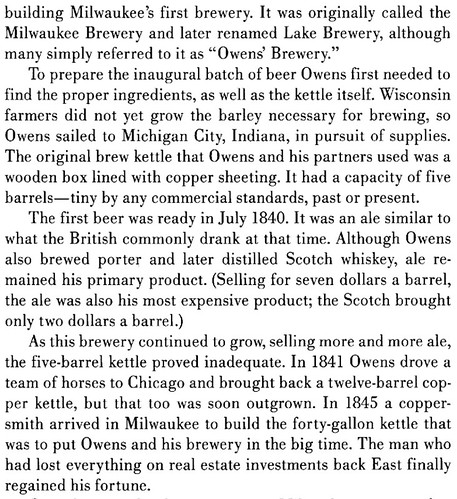
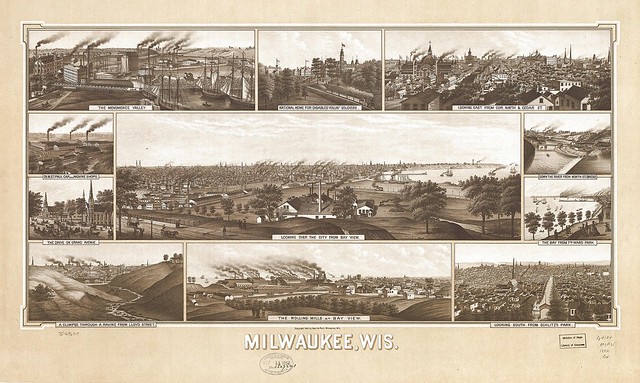
These views of Milwaukee are from 1882.
And this article for the Milwaukee Journal newspaper from March 19, 1916, entitled “Birth of Milwaukee’s Brewing Industry is Interesting Story” and begins with Owens’ story.
